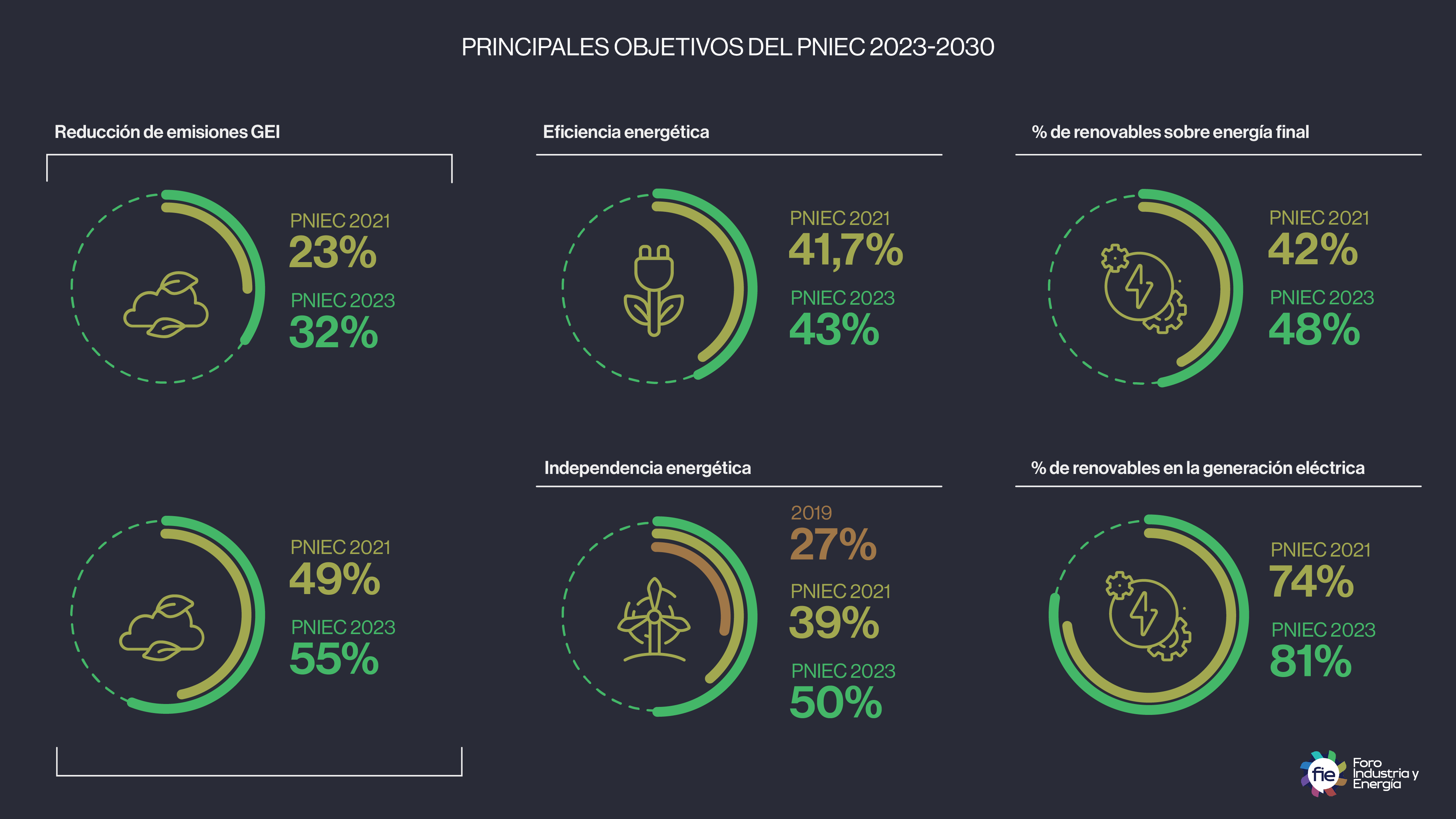Following Teresa Ribera’s appointment as Executive Vice President of Clean, Just, and Competitive Transition and Competition Commissioner, Spain presented this week in Brussels the new National Energy and Climate Plan (PNIEC), an essential tool for the decarbonized reindustrialization of the Spanish economy. The plan sets out a series of ambitious goals, which, according to the analysis from Foro Industria y Energía (FIE), cannot be achieved without resizing the electricity transport networks.
The PNIEC 2023-2030 sets the following general objectives for the 2030 horizon:
- 32% reduction in GHG emissions compared to 1990 (an 11% increase over the goals proposed in the PNIEC 2021 objectives), which also translates to a 55% reduction in emissions.
- 48% of renewables in final energy use (a 6% increase compared to the PNIEC 2021).
- 43% improvement in energy efficiency (a 1.3% increase compared to the PNIEC 2021).
- 81% of renewable energy in electricity generation (a 7% increase compared to the PNIEC 2021).
- Reduction of energy dependence to 50% (an 11% decrease in dependence compared to the PNIEC 2021).
Among all these objectives, the goal of achieving 81% renewable energy in electricity generation is particularly dependent on the development of the networks. This objective involves an increase in electricity demand from 2019, rising from the forecasted 5% increase in the PNIEC-21 to a 34% increase in the PNIEC-23, reaching 358 TWh.
Several experts have already highlighted this need to resize the networks in various FIE meetings.
New Electricity Transport Plan
It remains to be seen how this possible resizing of the network grid will be oriented in the new Electricity Transport Plan with a horizon of 2025-2030, which must take into account the updated PNIEC scenario, with very ambitious goals for renewables, hydrogen production, or storage.
The Plan, which is currently in the study phase until October 1, 2024, is key for the PNIEC to become a reality. Making it a reality is of utmost importance, as it would allow for meeting new demands to decarbonize the economy, accelerate the production of new renewable energies, and develop a new industrial value chain. FIE experts remind us that energy planning must meet the objectives of the PNIEC while also considering the current supply and demand for electricity to ensure the competitiveness of industry.
In addition to the issue of networks, there is the need to clarify the competencies of the new energy regulator, the National Energy Commission, which, after passing through the Council of Ministers this week, is beginning its parliamentary processing through urgent procedures.
It is noteworthy that the new regulator will depend on the Ministry of Digital Transformation and not on MITECO. FIE experts suggest that the reason may be the need to respond to the increase in energy consumption brought about by the digitalization of the economy, which Mario Draghi’s report has identified as key to the future of the European Union.
Necessary Investments
FIE experts point out that covering that 34% increase in electricity demand to reach 358 TWh and achieving the goal of 81% renewables in electricity generation requires overcoming the current infrastructure deficit in electricity transport.
The International Energy Agency (IEA) places the normal investment ratio in networks compared to new renewable capacity at €0.7 million per MW until 2030, while in Spain, this ratio is currently only €0.45 million per MW.

